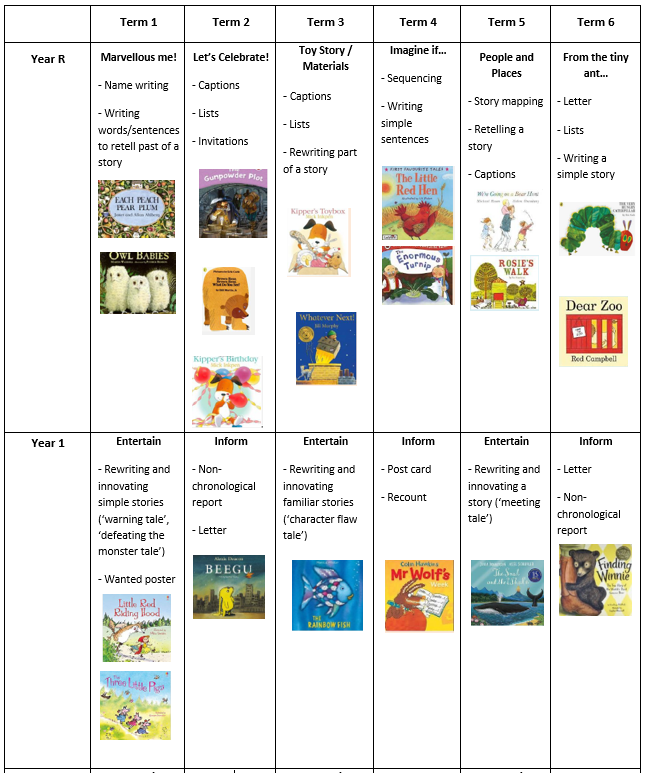Writing
Vision
Our writing vision is to develop our children into enthusiastic, creative writers who have the skills and knowledge to be able to write for a range of purposes and audiences. By the end of KS2, we want every child to feel confident in his or her writing capability and have a strong understanding of different genres. We aim to foster children’s enthusiasm for writing at an early age and promote a love of writing by providing opportunities to write about exciting and engaging topics.
Coverage
Our writing curriculum is in line with the expectations of the National Curriculum and is designed so that children learn to write for four different purposes; writing to entertain, writing to inform, writing to persuade and writing to discuss. Each term, children will focus on one of these writing purposes and they will learn about different genres relating to it and focus on specific grammar. The children are given time to master a genre before moving onto the next one and genres are revisited in subsequent terms and year groups to build upon the children’s knowledge and capability, ensuring there is a clear progression of skills. For each year group there are recommended quality texts which can be used as stimuli for writing; these have been selected for the knowledge and curriculum links they provide, as well as the opportunities they provide for writing outcomes. Other stimuli such as images and videos are used to inspire writing and develop children’s enthusiasm and creativity.
In Reception, quality texts are chosen to link with the topic for each term and the writing outcomes are based on these books. Many of the texts are repetitive in terms of their language and sentence structures, meaning the pupils can easily engage with them and replicate the language in their own writing. Some of the texts also introduce the children to rhyme.
Below is an overview of the year for each year group. This has been shared with other schools in our community as it is important for us to serve others.



From Year 3 upwards, spelling is taught 4-5 times per week using the Rising Stars Spelling scheme. The lessons focus on teaching spelling rules, patterns and strategies. The scheme also allows time for the children to learn and practise the statutory spellings for each year group. In Year 1 and 2, spelling rules are taught alongside phonics and during English lessons.
Handwriting is regularly taught in Early Years and KS1; children learn to form letters cursively and they are taught which letters belong to which letter family. In lower KS2, whole class handwriting is taught once a week and interventions occur when necessary. Handwriting interventions continue in upper KS2 to enable all children to make progress with their letter formation.
Evidence
The impact of our writing curriculum is evidenced largely through teacher assessment. Formative assessment happens regularly during the day as children are given opportunities to write in subjects from all across the curriculum; from this assessment, teachers adapt their planning accordingly to meet the needs of their class and ensure progress in skills is being made. In terms of summative assessment, the children are required to do two ‘unaided writes’ every short term; teachers assess this writing alongside a year group assessment framework to decide on a final judgement. We moderate writing several times a year, both internally and with other local schools, to ensure that our assessments are accurate. Through successful coverage of the curriculum, our writing results at the end of KS2 will exceed the national average and our progress scores will be positive.
Spelling and grammar assessments are completed three times a year from Year 2 to 5, using the NFER assessment materials. Year 1 are only assessed in the summer term. Year 6 are regularly assessed used past SATs papers throughout the year. All children are also tested three times a year on the statutory year group spelling words and progress over the year is recorded.
A further important way of measuring success is through discussions between teachers and senior leaders. Formal meetings are held at regular intervals in the year, during which the writing attainment and progress of all children is discussed; these meetings involve the class teacher, writing lead and SENCO.
The teaching of writing is also monitored through lesson observations and book scrutinies. This ensures that our curriculum is being delivered correctly; meaning children are being taught a wide range of genres and will leave our school being able to write for a range of purposes and audiences, thus fulfilling our writing vision.
